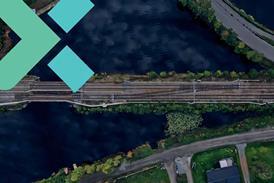Close menu
- Home
-
News
- Back to parent navigation item
- News
- Traction and rolling stock
- Passenger
- High speed
- Freight
- Infrastructure
- Policy
- Technology
- Ticketing
- Business
- Research, training and skills
- Accessibility and inclusion
- People
- Urban rail news
- Suburban and commuter rail
- Metro
- Light rail and tram
- Monorail and peoplemover
- Regions
- InnoTrans
- In depth
- Events
- Data
- Maps
- Tenders & Jobs
- Sponsored content
- Insights
USDOT seeks to enhance safety measures following Ohio derailment
By Railway Gazette International2023-02-22T16:10:00

USA: Federal Transportation Secretary Pete Buttigieg has called for ‘a three-pronged push’ by regulators, industry and Congress to improve the safety of rail freight operations, following the derailment of a Norfolk Southern train carrying hazardous chemicals at East Palestine, Ohio.
Already have an account? LOG IN
To continue…
You’ve reached your limit of content for the month














